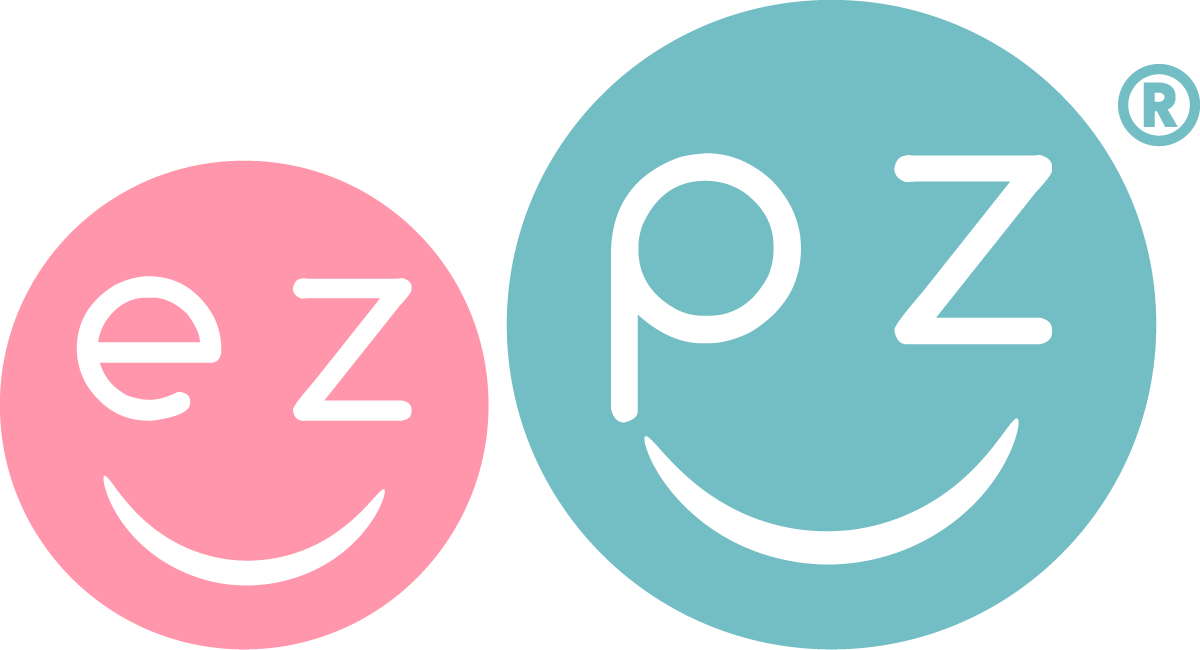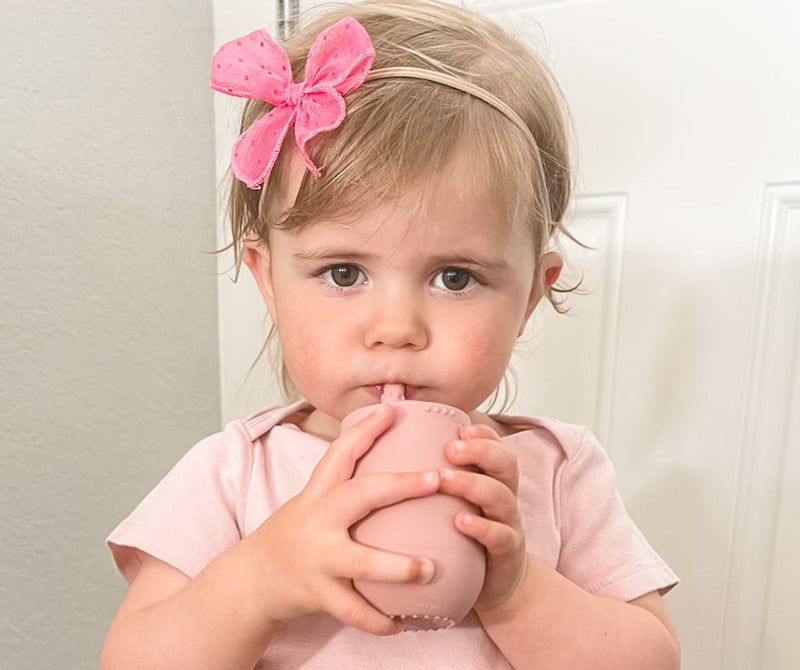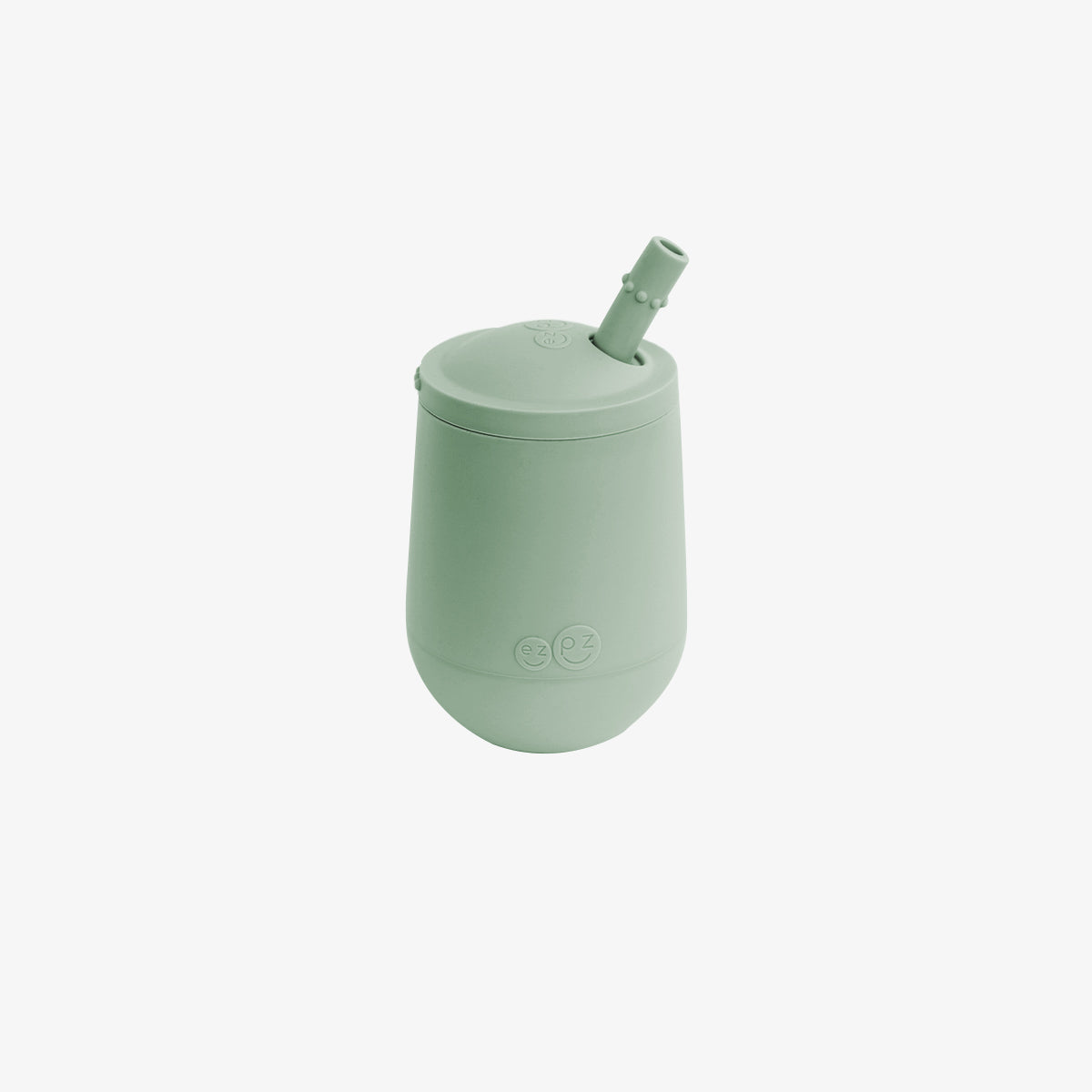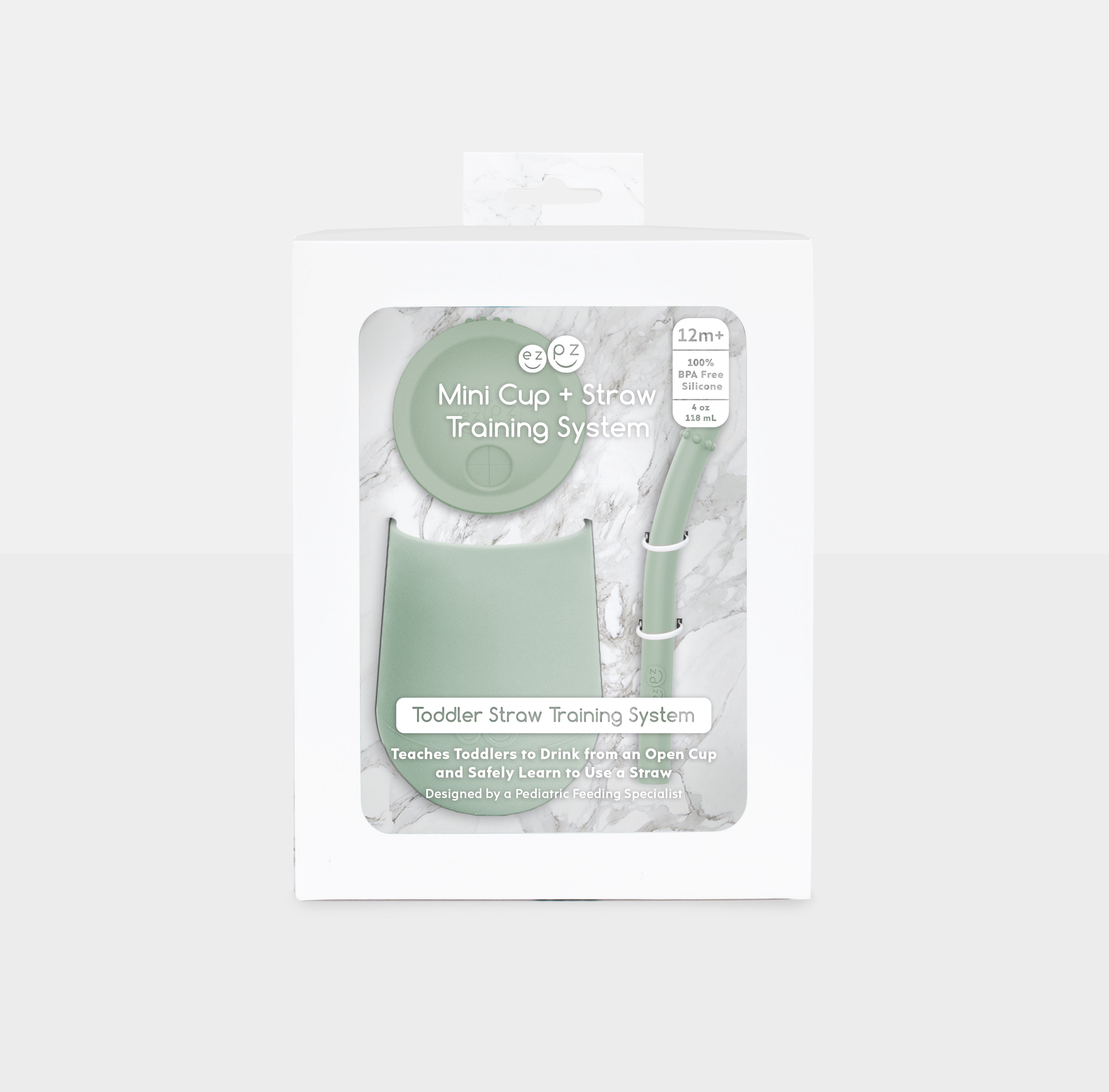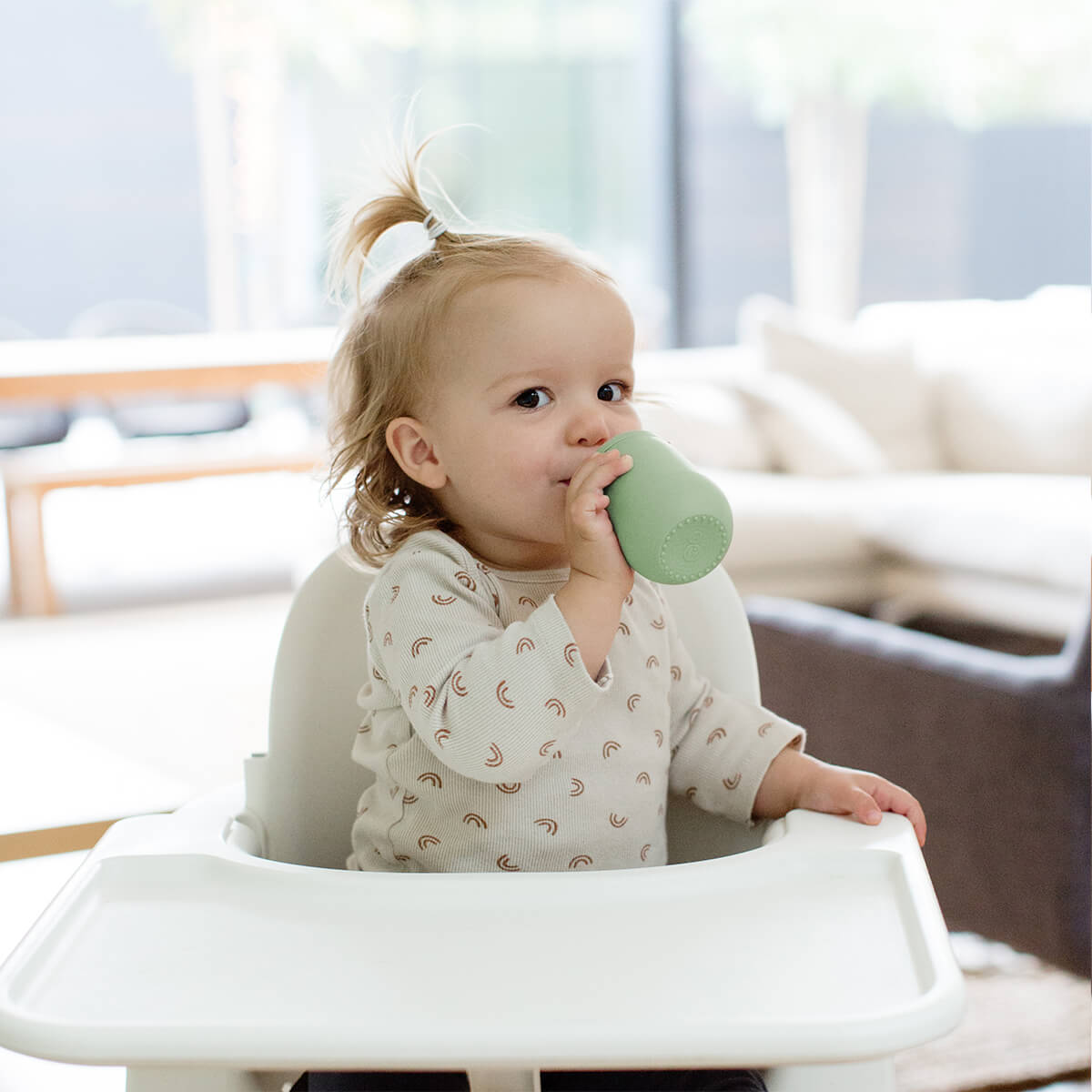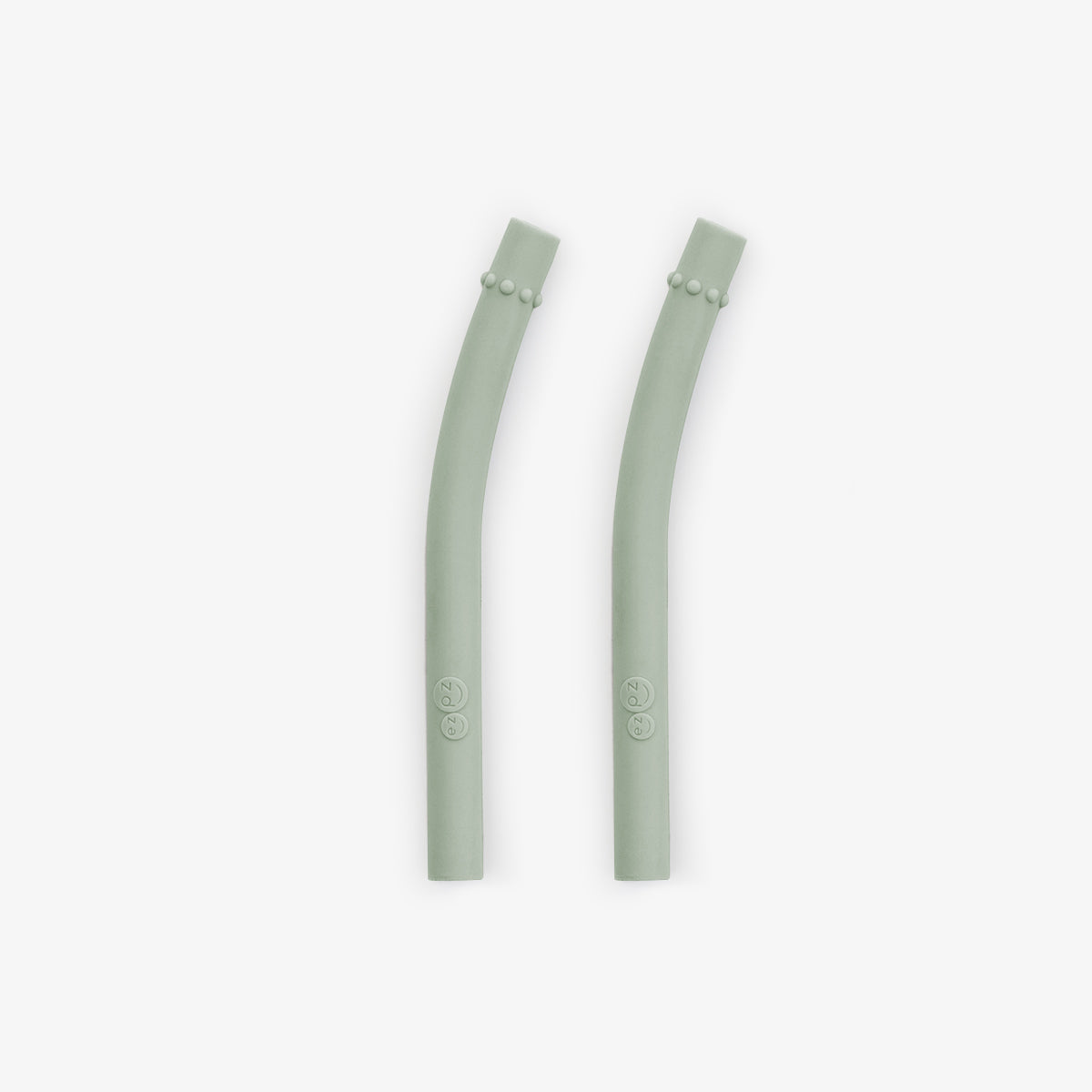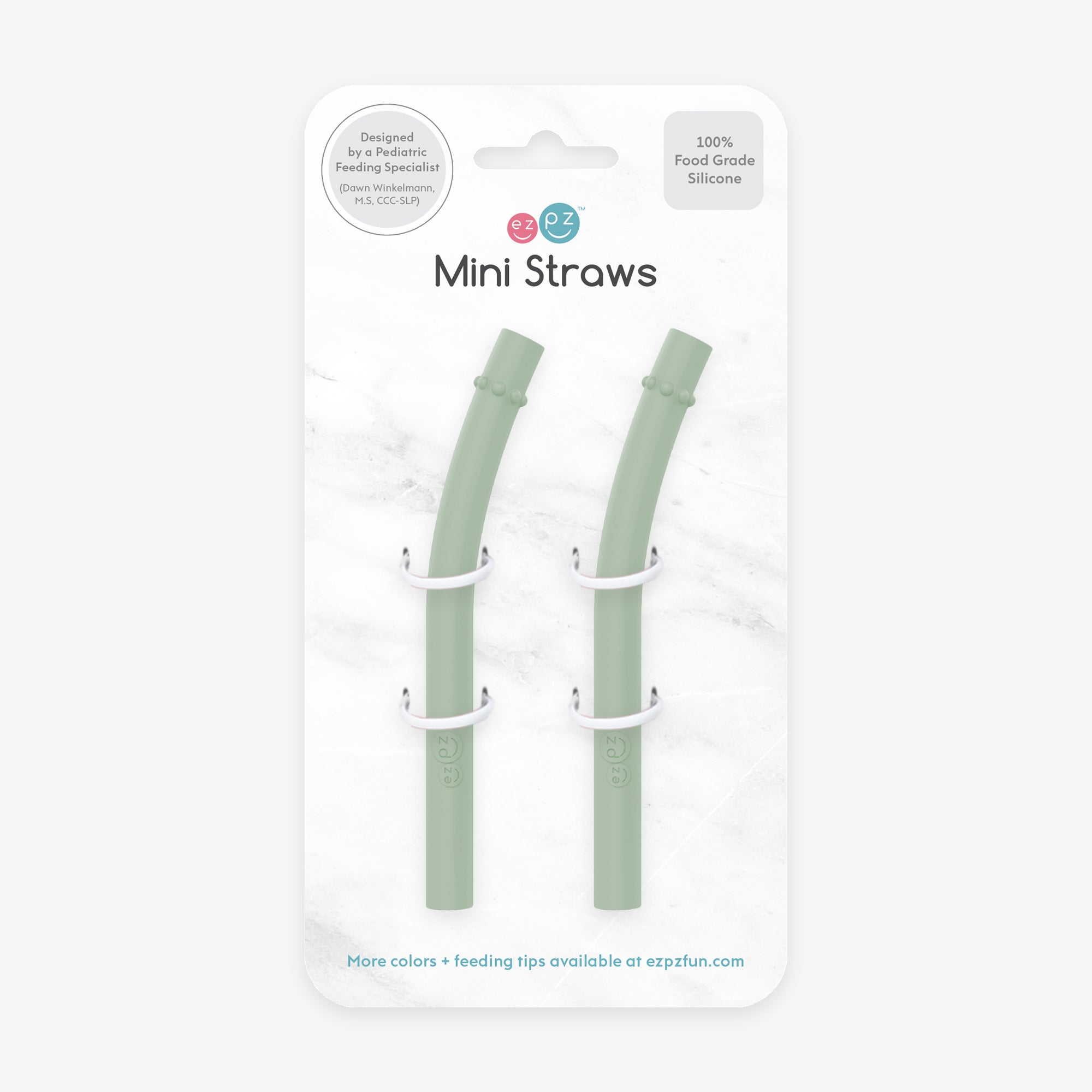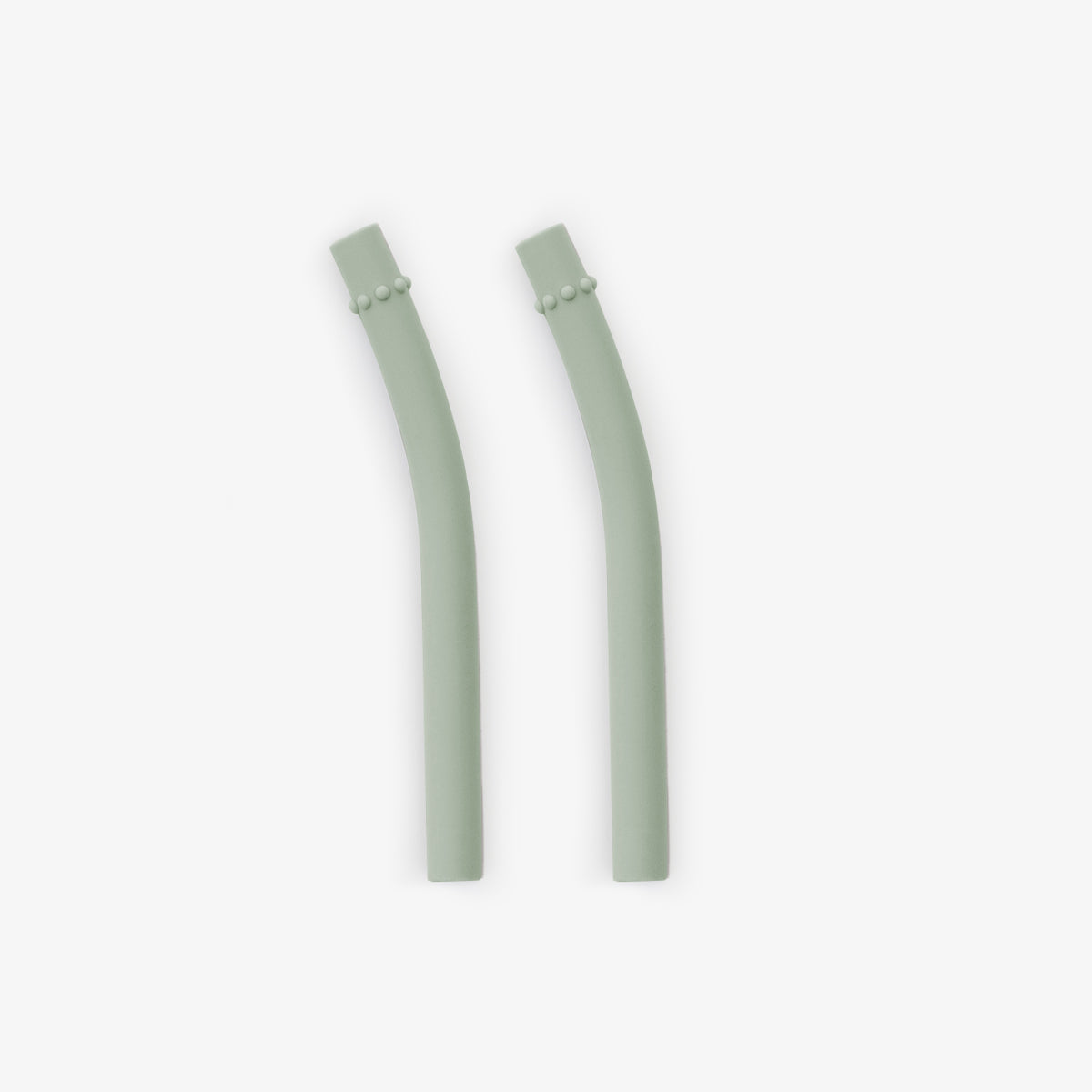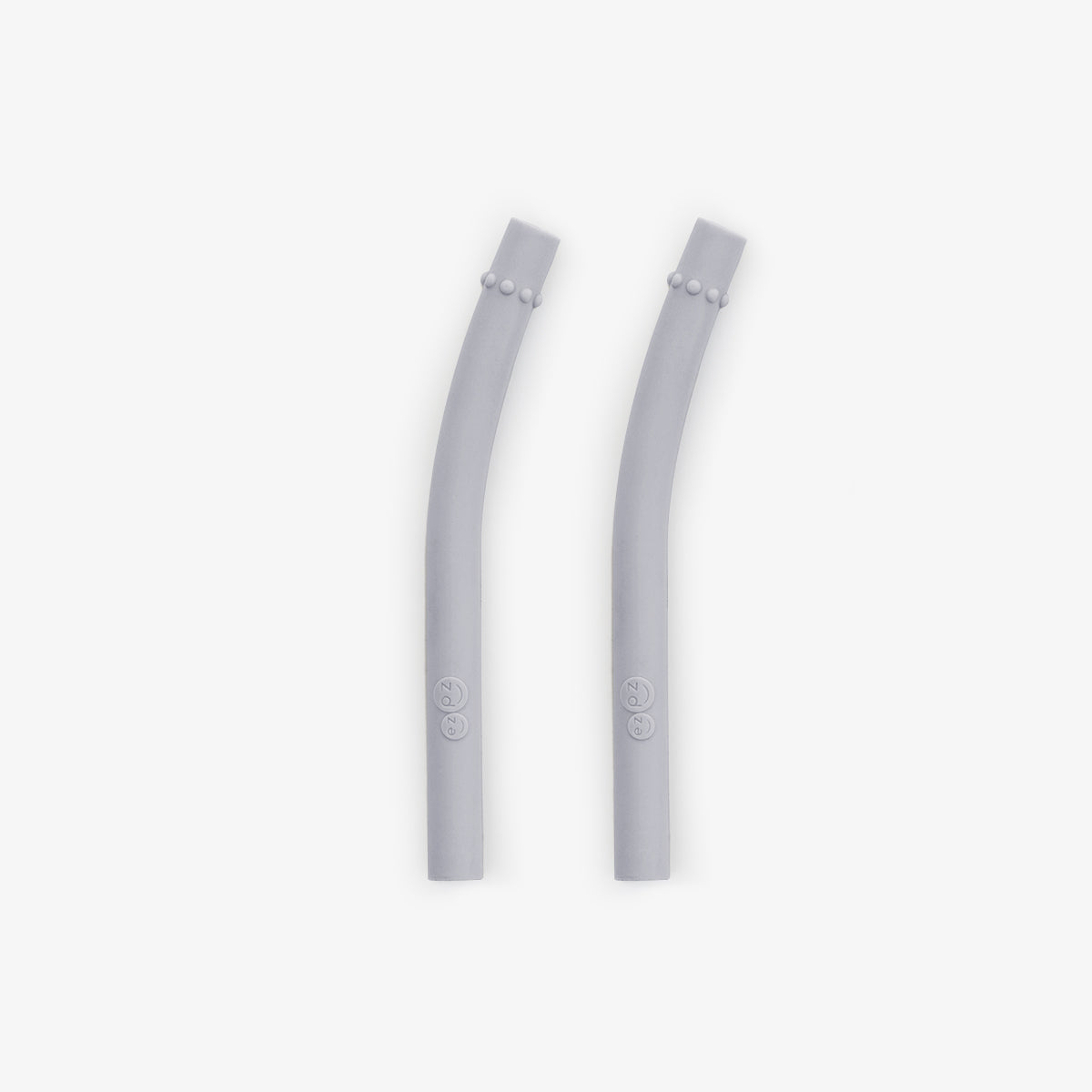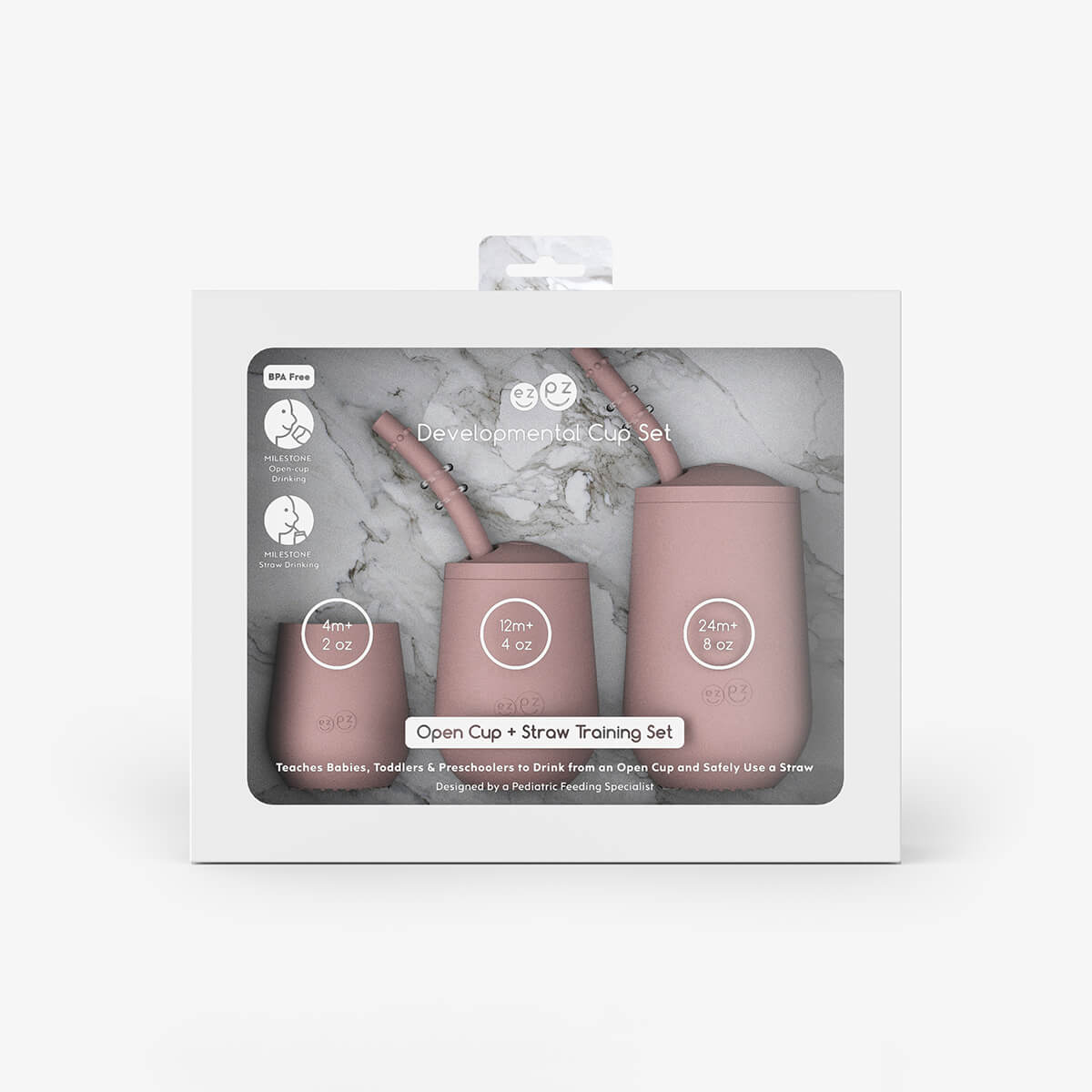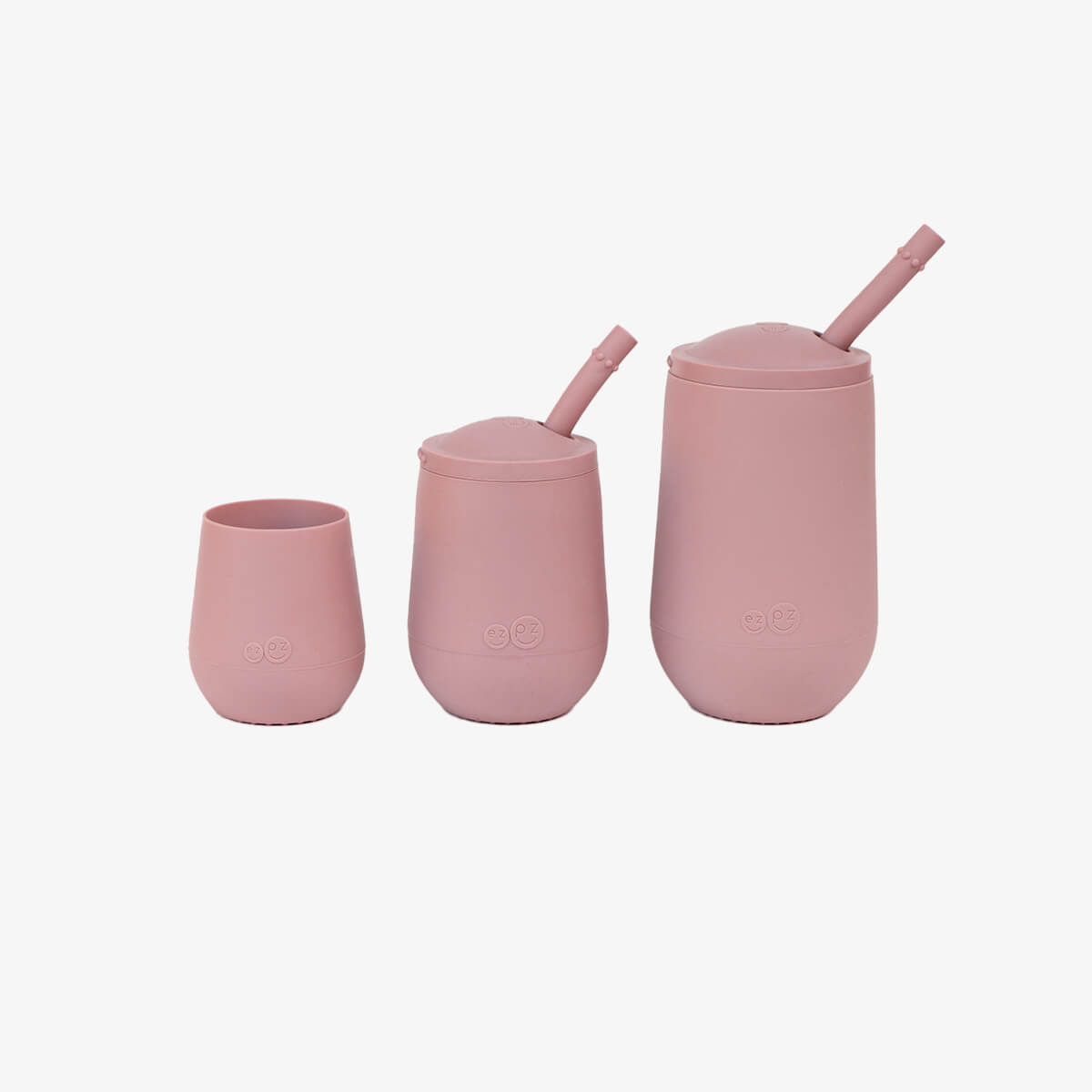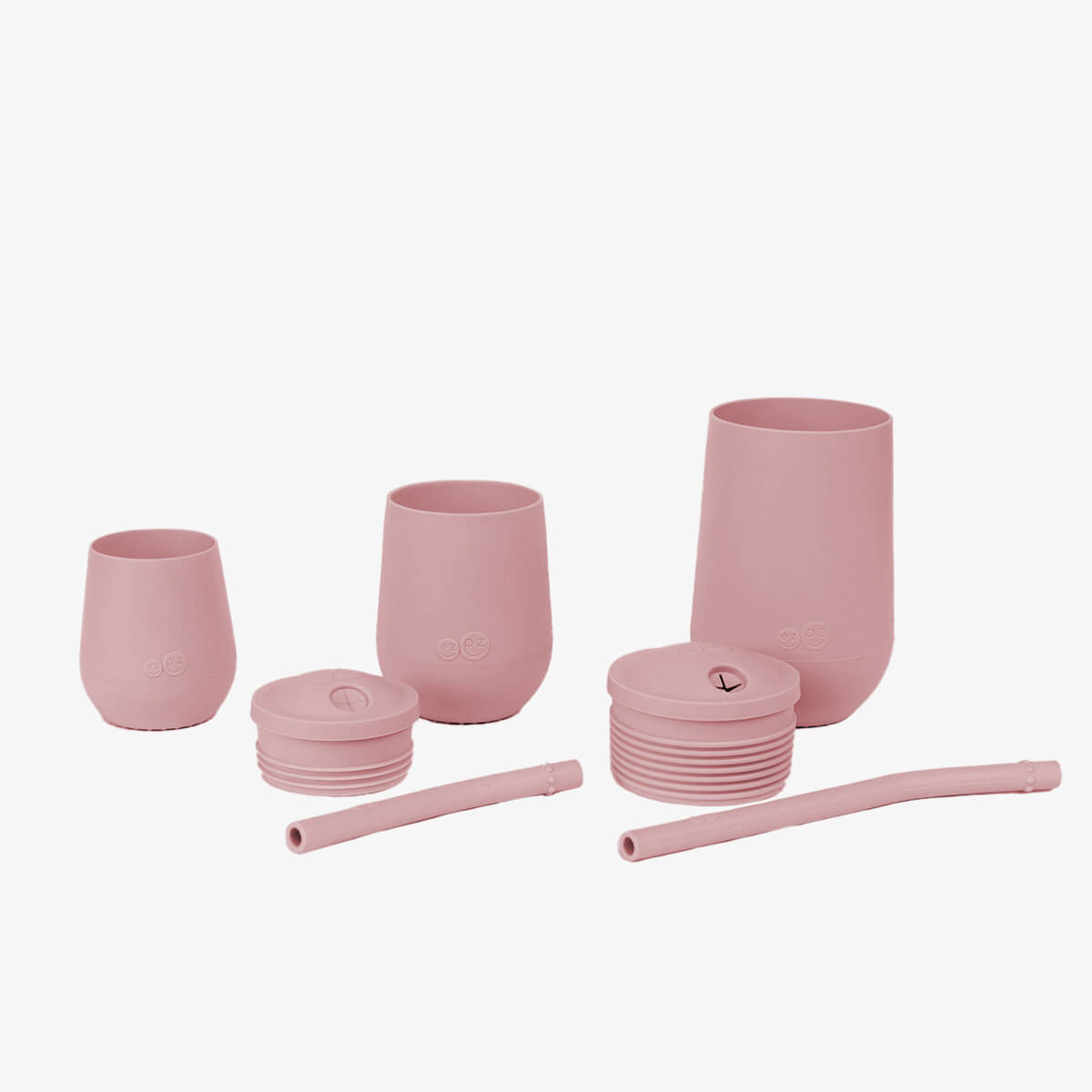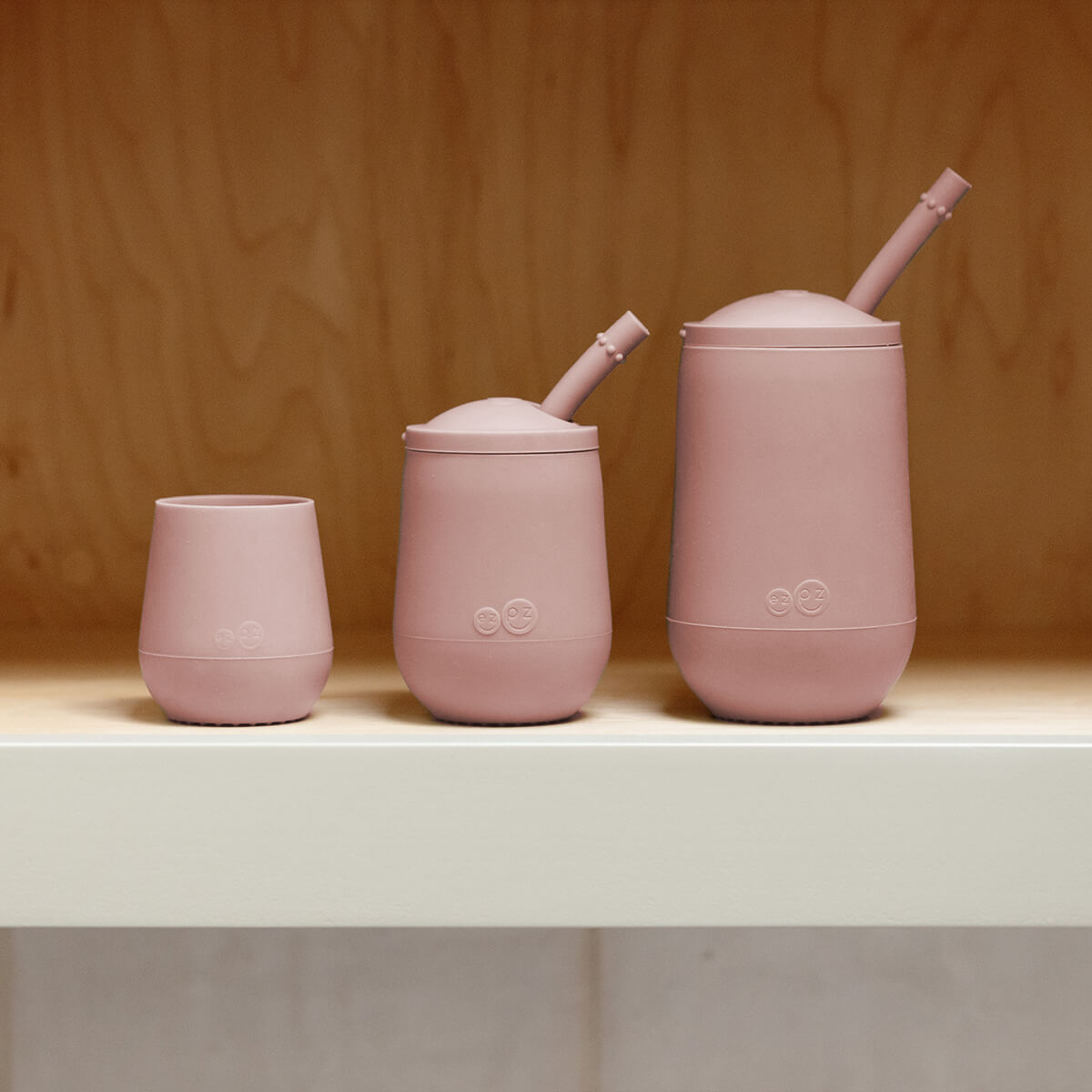In the course of my career as a feeding specialist (30+ years), I’ve always had a hard time finding a safe straw for teaching straw drinking to babies and toddlers. Below I have outlined four obstacles I found with straws, and then I explain why the design of the ezpz Mini Cup + Straw Training System is different.
1. Straw Length: Most feeding therapists cut a regular straw in half when teaching straw drinking. Why? Because a shorter straw is easier (and safer) for children to drink from than a long one. Using a long straw can be concerning, as the child has to suck and hold their breath for a longer period of time. Holding their breath while learning to suck can be developmentally difficult for a baby or toddler. And drinking from a long straw can cause them to swallow liquids very quickly, which may be hard for them to manage. The ill-coordination of this process can lead to coughing, gagging, liquid coming out the mouth (or nose) and possible choking. This is why one of the safety features of the Mini Straw is a short length.
- Short Length: The Mini Straw helps a child’s ‘suck-swallow-breathe synchrony’ because it takes less strength and coordination for them to suck liquid from a shorter straw. This also encourages nose breathing, which makes straw drinking more graceful and smooth.
2. Straw Placement: When teaching straw drinking, I also found it hard to teach babies and toddlers where to place their lips on the straw. Most of the children I worked with would put the straw too far into their mouth and make a suckling motion (similar to drinking from a Sippy cup, which is an immature swallow pattern that we want to avoid). When designing the ezpz Mini Straw, I wanted children to have some tactile input to help them with mouth placement. The ezpz Mini Straw has sensory support that contributes to the safety of straw drinking.
- Sensory Support: The Mini Straw’s sensory bumps provide tactile awareness to keep lips at the tip of the straw. Proper lip placement will decrease tongue suckling and activate lip rounding + tongue elevation for a mature swallow pattern.
3. Straw Opening: One of the challenges I have when teaching straw drinking is finding a straw with the right sized opening. Some straws are too narrow, requiring a child to work harder to suck (a difficult task for babies and young toddlers). This caused the children I worked with to fatigue easily and struggle to maintain their daily hydration needs. Other straws don’t work the mouth muscles as well because they are too wide, which provides too much liquid in the mouth. This made it difficult for my clients to swallow, causing the child to spit out the liquid, blow the liquid back into the cup or have it accidentally enter the airway (aspiration). One of the safety features of the Mini Straw is the perfect diameter.
- Diameter: The opening and curvature of the Mini Straw promotes lip and jaw closure, making sipping more successful and safe. And if you want to offer your little one a variety of liquids, the diameter of the straw supports thin and thick liquids. You can offer purees, breastmilk (or formula) and eventually water all with the same straw cup. Score!
4. Straw Material: Another concern I had when teaching straw drinking is the oral damage some of the straws would cause with my teething babies and toddlers. It’s not fun for the child (or parent) to have a hard straw cut open a tender area in the mouth. And if you have a child with a tongue or lip tie (and are considering getting a revision), you definitely want to use a silicone straw to make drinking less uncomfortable! Another safety feature of the Mini Straw is the soft material.
- Silicone: The Mini Straw is made of soft, food grade silicone, a gentler option for your little one's swollen, tender gums compared to hard plastic or metal straws. The straw's soft texture provides gently pressure that can help massage the lips and gums, supporting oral motor development. And if a straw goes missing (it happens!), no worries, we offer a convenient Straw Replacement Pack.
Straw drinking and open-cup drinking are important skills for your little one to master! The Developmental Cup Set is a training kit designed to help babies, toddlers and preschoolers learn to drink safely using different sized cups that match their stage of oral development. We'd love to see your little one's progress! Tag us at #ezpzfun.
